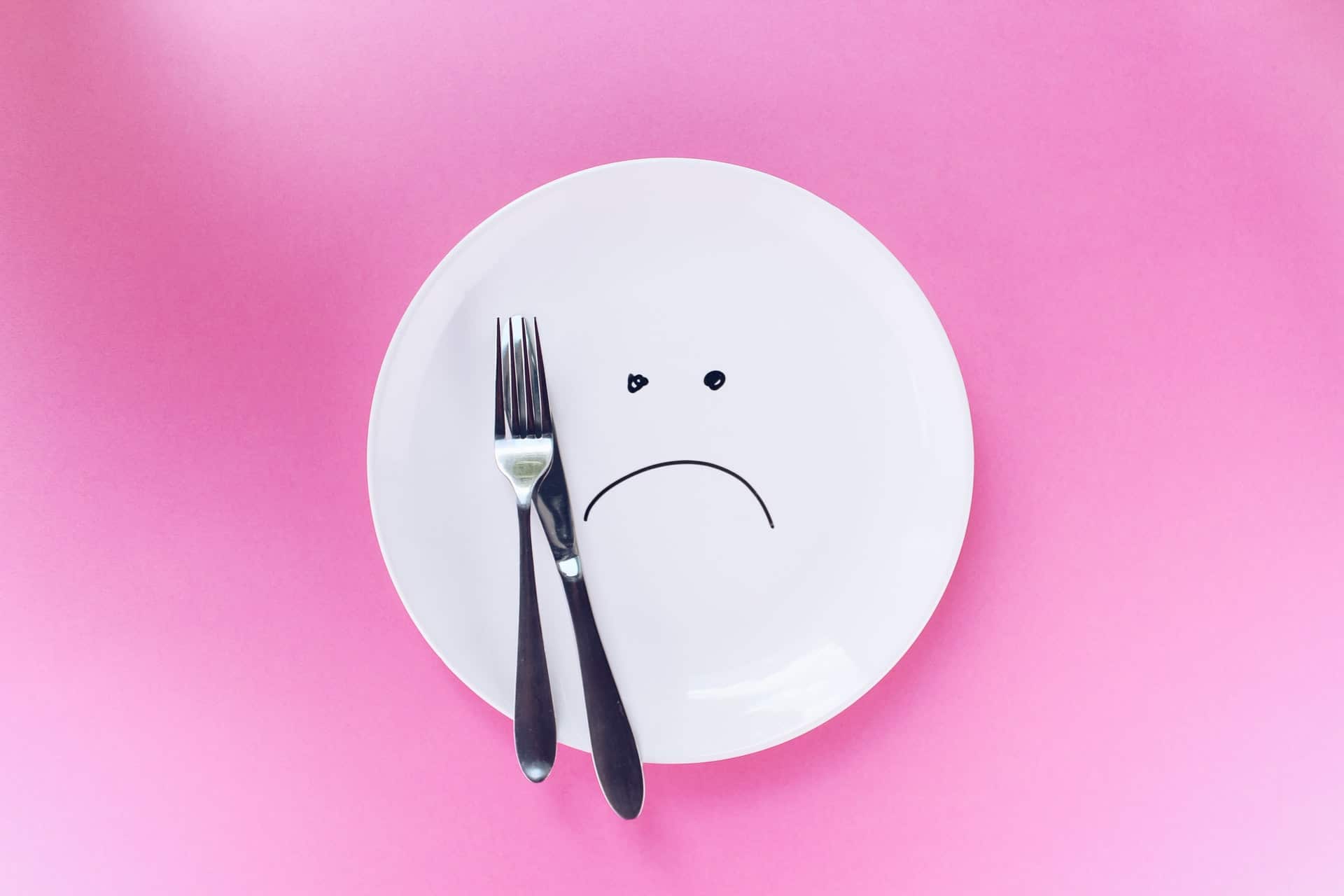“I don’t know how to lose weight”. “I want to lose weight, but have no idea where to start”.
By far, these are the top comments and questions I see posted in Facebook groups, Pinterest boards, and asked by friends and family. I can understand why. There is so much information out there, that it’s hard to take in and digest (pardon the pun).
Should you try keto? Or join Weight Watchers? Maybe Jenny Craig or Nutrisystem? What about Mediterranean or Paleo? Or maybe you just need to spend more time at the gym.
The list is endless. Hence the confusion. Many who try start out confused, stay confused, don’t see instant results, and end up quitting – again.
In 2019, a report produced by Research and Markets showed that the U.S. weight-loss industry was worth a record $72 billion dollars. Yet for all of the money that’s being spent, obesity rates in America are higher than ever.
What are we doing wrong?
Personally, I think its analysis paralysis; there is just too much information out there to help you make an informed decision on where and how to start losing weight.
I did a simple Google search on “how to lose weight” and came up with 905,000,000 results. The top 4 spots were advertisements (of course they were…. how do you think this country spent $72 billion dollars) and the rest were catching ‘quick and easy tips’ on how to lose weight.
In a sampling of all of those tips, here’s the one simple thing I didn’t see mentioned at all. It’s the key to weight loss, and it’s not even discussed. No matter what diet plan or program you try, you are doomed to fail unless you understand this indisputable scientific fact.
You MUST be in a calorie deficit to lose weight.
Truth Bombs You Need to Know to Lose Weight
I just gave you Truth Bomb #1. In the rest of this article I’m going to give you a few more truth bombs. You’ll also get a few simple steps to help you cut through the crap of information that’s out there, so at the very least, you understand what you need to about losing weight you stand a better chance of being successful in any program you chose to follow.
Honestly, once you understand these concepts, mindset notwithstanding, losing weight is a simple matter of science.
Truth Bomb #1: The only way to lose weight is to be in a calorie deficit
Our bodies are very efficient machines. The fuel we run on is calories and we obtain those calories from food. Our bodies burn calories simply by maintaining itself; our heart pumping, our digestive system working, breathing, even thinking. All of that takes energy, and that energy in the human body is a calorie.
The problem is, we feed our bodies as if we’re fueling a NASCAR racing car (2-5 mpg) when in fact we only need enough fuel to power a Prius (58 mpg city, 53 mpg highway).
Being in a calorie deficit means that we consume only that which is needed to fuel our bodily functions. Anything above that we store as fat, anything below that contributes to weight loss.
Truth Bomb #2: You can’t get into a calorie deficit until you understand what and how much you’re eating
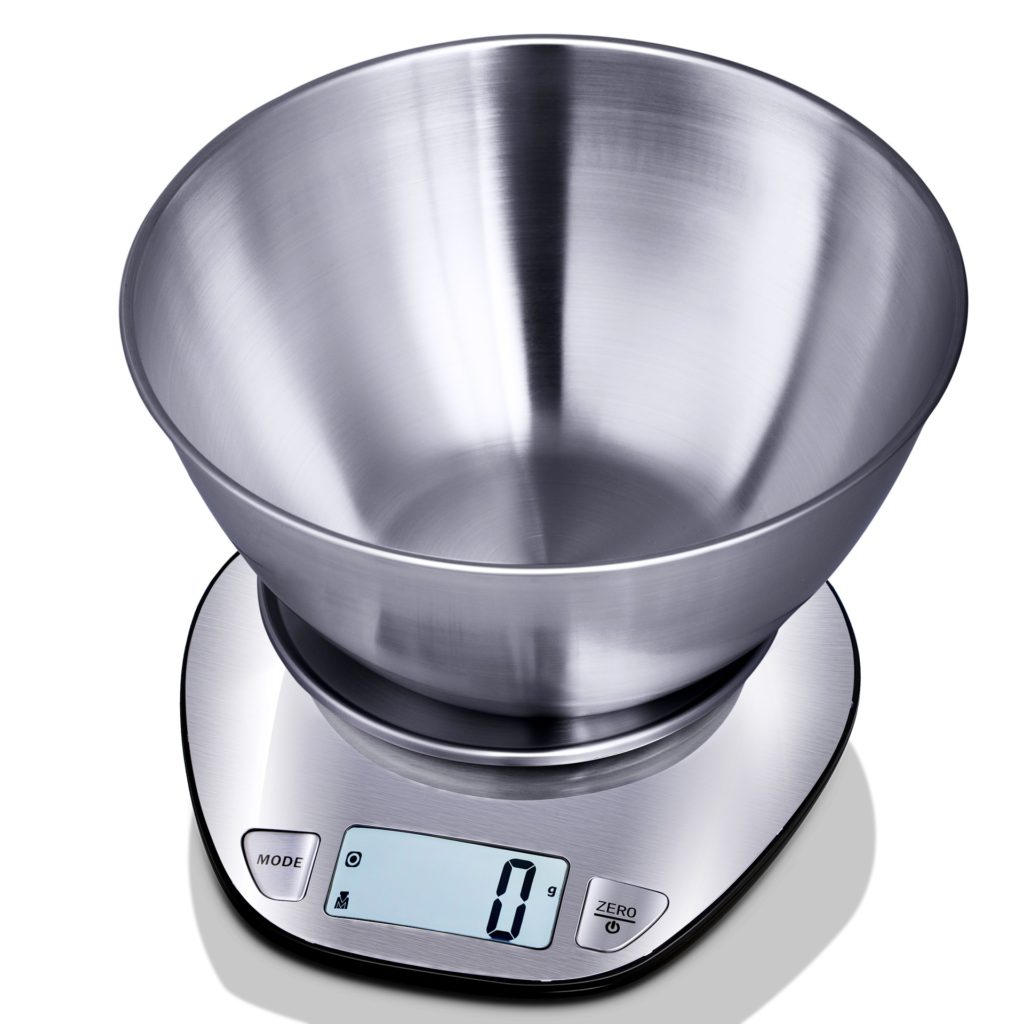
It’s great to understand that you need to be in a calorie deficit to lose weight, but if you don’t know what and how much you’re eating (and drinking) on a daily basis, you’ll have no idea of what you need to cut back on to get into a calorie deficit.
Humans are terrible at estimating how much we eat. Although we’ve gotten better at reading nutrition labels on foods, we still confuse serving size with portion size. In our Super-Sized world, portion sizes have become distorted. Two McDonald’s cheeseburger seems less offensive than a Big Mac, but it’s not.
We overlook sneaky calories in the condiments of our foods and what it’s cooked in and don’t take into consideration the calories in our beverages. Snacking has turned into meal-sized calorie indulgences. It all adds up. And it means we’re all eating way more than we think we are.
Truth Bomb #3: Losing weight takes time
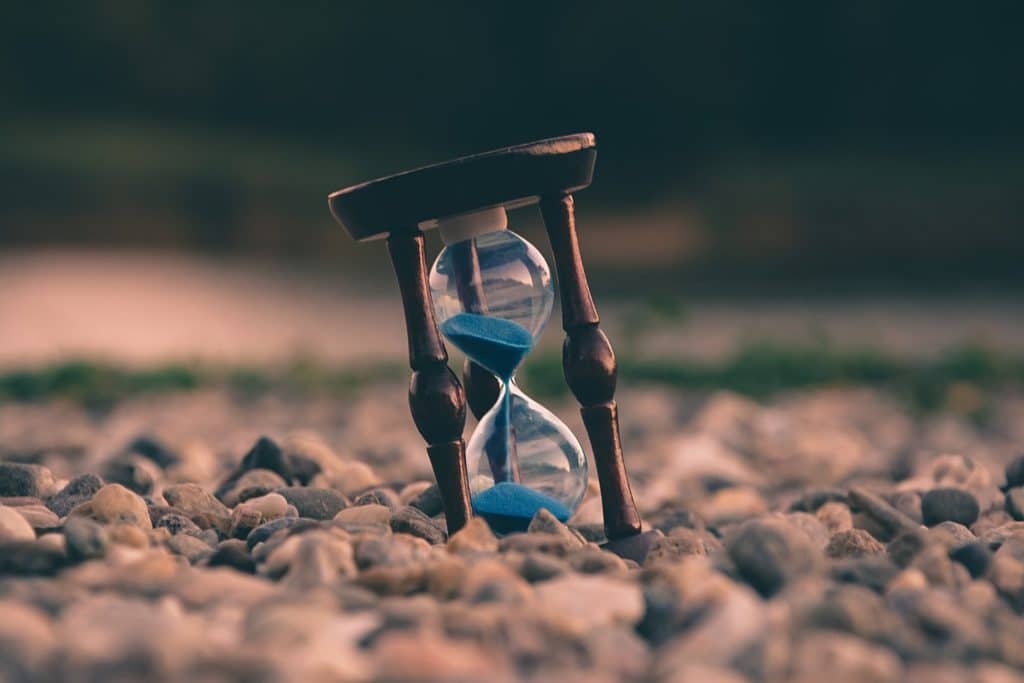
Next time you’re in the supermarket checkout line, take a look at the magazine covers and count how many have articles promising to help you lose 10 pounds in two weeks, or something equally ridiculous. Is it possible? Maybe. It is healthy and sustainable? No.
Here’s the hard and very uncomfortable truth. Losing weight takes time. If you’re overweight, you didn’t get that way overnight. Conversely, it will take time to lose weight. I’m also here to tell you that if you’re a peri- or menopausal woman over 50, physiology is against you and it’s going to be harder to lose weight – but not impossible.
We live in a society of instant gratification. Near everything we want is at our fingertips. We can have goodies from Amazon shipped overnight and meals from Grub Hub delivered in an hour. When we want something, we want it quickly – or sooner.
Sustainable long-term weight loss doesn’t happen that way. It take consistent effort every day and trusting that the science is working, even when we don’t see a noticeable change in the scale or the way our clothes fit after a week.
The Basic Steps You Need to Take to Know How to Lose Weight
Now that I’ve brightened (or blown up) your day with all of these Truth Bombs, let me give you some no-nonsense steps you can take to start your weight loss journey. Some of these align to the Truth Bombs I pulled the pin on earlier.
Some of this you might have heard before, some you might not have. But regardless of which path you decide to take on your weight loss journey, whether its going it alone or choosing to go with a program, taking these initial steps will better illuminate the path ahead.
Step #1: To understand where you want to go, you have to know where you are
Truth Bomb #1 talked about being in a calorie deficit. To understand what that deficit is for you, you have to know how many calories your body needs to maintain itself.
To find that out, go to https://www.calculator.net/calorie-calculator.html and plug in your information. I used myself in this example: I’m a 52 y/o woman, I’m 5’4” and currently weight 133 pounds.
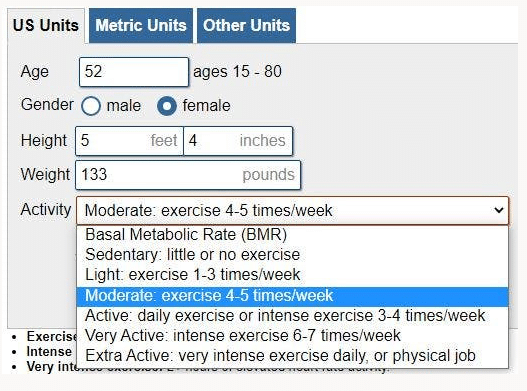
For the Activity question, I answered Moderate:

I exercise at least 5 days a week for at least 45+/- minutes, but I also sit on my butt all day at work. It’s not unusual for me to sit at my desk for 3 hours straight, then have to un-pretzel myself when I have to get up to pee.
Be honest with yourself here. You’re only cheating yourself if you overestimate.
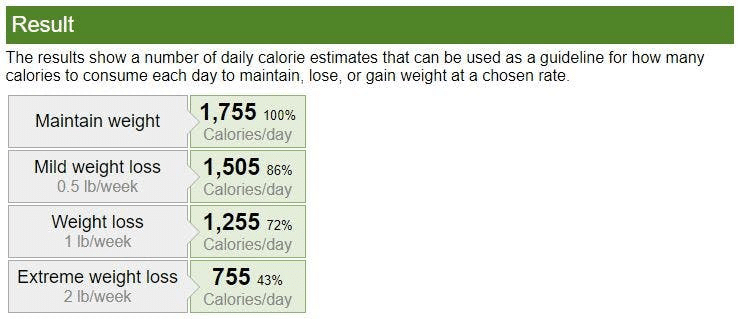
The results will tell you what you should be eating to maintain your current weight, but more importantly, what you should be eating to lose weight.
If I want to lose the 10 pounds of blubber and back fat I’m still lugging around, I need to drop my calorie consumption to 1,505 calories a day.
THIS is what it means to be in a calorie deficit.
BTW – I would NOT EVER recommend you try to lose more than .5 pound a week, especially if you’re just starting out. You’ll be miserable and want to quit in no time. A half-pound weight loss per week is sustainable because you’re not making drastic changes to your diet to get there.
Now that you know what you should be eating, let’s move on to what you actually ARE eating.
Step #2: For 1 week (7 whole days) keep a food journal

Excuse me? A what? A food journal. It’s back to school season and composition notebooks and spiral notebooks are on sale everywhere. Pick one up and write down every single morsel of food you put in your mouth.
If you make breakfast of two eggs sunny-side-up fried in butter with two slices of white toast slathered with more butter, write it all down. Do you eat the crusts from the toast your kids won’t eat? Write it down. If you have a glass of sweet tea and 3 free refills, write it down. Count the creamer in your coffee and whether you took 1 lump or 2 of sugar.
If you order a hoagie for lunch, write down everything that’s in that hoagie; how many slices of lunch meat and cheese, and the lettuce, tomato onion. Don’t forget the roll it’s all sitting on and also be sure to include the oil, mayo, mustard, and pickles. I hate to be the bearer of bad news, but condiments have calories and they all add up.
Do the same thing for dinner and all your snacks in between.
Weekends are especially important. We’re off out typical schedules and we may indulge more. Whatever you do, write it down. There are no ‘free’ calories.
Why a notebook and not your smart phone or computer? Studies show that taking notes by hand is more effective since it involves deeper cognitive processing of the information. It also helps you remember better. If carrying a whole notebook doesn’t work for you, take a clean sheet of paper, fold it up and keep it in your wallet or purse.
I can’t emphasize enough the importance of this exercise and how important it is to be detailed. The information you put in the food journal will feed the next step.
Step #3: Review your food journal and decide what you can cut out or reduce
I can guarantee you that you’re eating way more than your maintenance calories either in a given day or in total across the week.
So how do you know how many calories you’re eating? Without weighing and measuring everything, you don’t. But you CAN look back at your food journal and see where you might be over eating. From here, decide where you can cut portion size, make food swaps, or cut some food out altogether.
Do you take your coffee with cream and sugar? Reduce the amount of sugar you’re using. Switch from regular creamer to fat free creamer. Those calories add up. Drink one less can of soda per day – or per week. Replace that soda with a bottle of water. Skip on second portions and limit desert to one time per week.
When I completed this exercise, I discovered I was using a whopping tablespoon of sugar and a ¼ cup of full fat creamer in my coffee every day. Gradually, I cut down the sugar and switched to fat-free creamer. I was heavy-handed with the oil olive when I would prepare my roasted vegetables. I took to measuring the smallest amount needed and augmented with cooking spray. If I grabbed a ham and cheese sandwich from the deli, I ordered it without mayonnaise, and instead grabbed a small packet and added it myself.
Let me not gloss over portion size. The National Institute of Health (NIH) has put together a couple of pretty eye-opening presentations that describe how portion sizes in the food that are produced have changed over the years. Taking that into consideration, I encourage you to be mindful of the portion sizes on your plate. Aside from skipping seconds, cutting down on ‘firsts’ is also important. It doesn’t matter if the food is ‘healthy’ (as in the case of vegetables) or not. Too many calories are too many calories. If you go out to eat, carve out half of what they give you and ask for a to-go box. At home, put a smaller amount of food on your plate. Just to be clear, skipping seconds also don’t mean that you make your ‘firsts’ bigger.
The idea is to make slow changes. You don’t have to dive into a fully restrictive diet to lose weight. In fact, unless your health is in such dire straits that you have to lose a significant amount of weight quickly, I’d suggest that you don’t try to make drastic changes to your current way of eating. But you DO need to make some changes. Small changes, made consistently, add up over time. Once you acclimate to one small change, make another, then another. Before you know it, you’ll have lost a few pounds.
Once you start to see progress, that’s when you might want to become a little more structured in your approach to dieting.
Step #4: Be patient
To reiterate Truth Bomb #4, losing weight takes time and we are an impatient bunch. How patient do you have to be? Let’s look back at the example of the information I provided for the calorie calculator in Step #1.
Ideally, I’d like to lose another 10 pounds. To sustainable lose that 10 pounds at .5 pounds a week, it will take me 5 months (2 pounds per month @ 5 months).
Seeing that feels like a gut punch, doesn’t it? Yep – I totally get that. It will take courage, strength and determination to put forth this kind of effort over the long haul to get results.
Think back when you went to college. When you started out, did you ever think you wouldn’t make it through to get your degree? I’m sure there were points along the way where you felt you’d never see the light at the end of the tunnel. But you did.
Even if you didn’t go to college, I am positive there are dozens of other examples where you set out to accomplish something that you knew would take a long time. If losing weight is a goal where you are bound and determined to succeed, its time to summon the same grit you applied to your other endeavors. With that mindset, the weight loss you desire IS achievable.
Can’t I lose weight by exercising?
In case you haven’t noticed, I haven’t mentioned anything at all about exercise. So, here’s another Truth Bomb.
Truth Bomb #4: You can’t exercise your way out of a bad diet
Exercise is absolutely essential for overall health and wellness. It helps to prevent heart disease, diabetes and a host of other preventable illnesses that can be crippling and costly.
What it cannot do it promote sustainable weight loss.
The foods you consume are made up of carbohydrates, fats and proteins. When you exercise, your body looks to energy stores for fuel. It’s first choice is carbohydrates in the form of that stored glycogen we talked about above. When there’s no more glycogen, it moves on to fat, then to protein.
While exercise does burn calories, it will never burn enough of the excess calories that you consume to put you in the consistent calorie deficit that is needed to promote weight loss.
Period. End of story.
Well, not quite.
The 5 months of eating in a calorie deficit that I noted in the example above can be shortened if I am exercising consistently AND burning a good number of calories in each session. To be clear, it will not speed up that time frame by very much; maybe 2 -3 weeks.
Make no mistake – exercise alone will NOT produce the calorie deficit needs to lose weight, but it can support the process.
Conclusion
The desire to understand how to lose weight when you don’t know where to start is daunting and confusing. The diet industry sets it up to be that way.
It doesn’t have to be. If you understand the truth bombs laid out here and execute against the three steps I’ve described, you WILL see success. There is no magic pill or silver bullet. The science bears that out. To be successful, you do have to do the work, but you don’t have to up-end your life to see results

